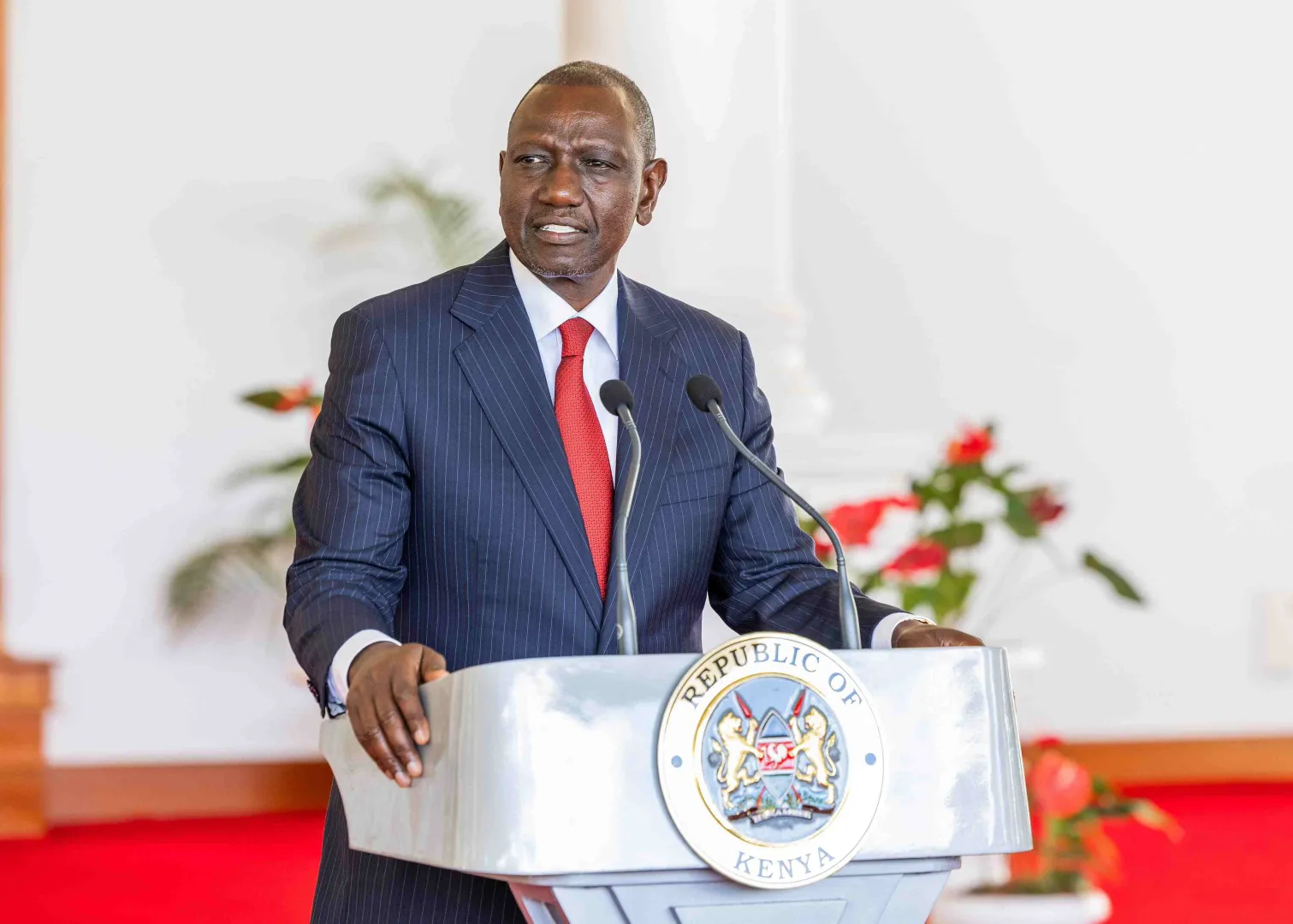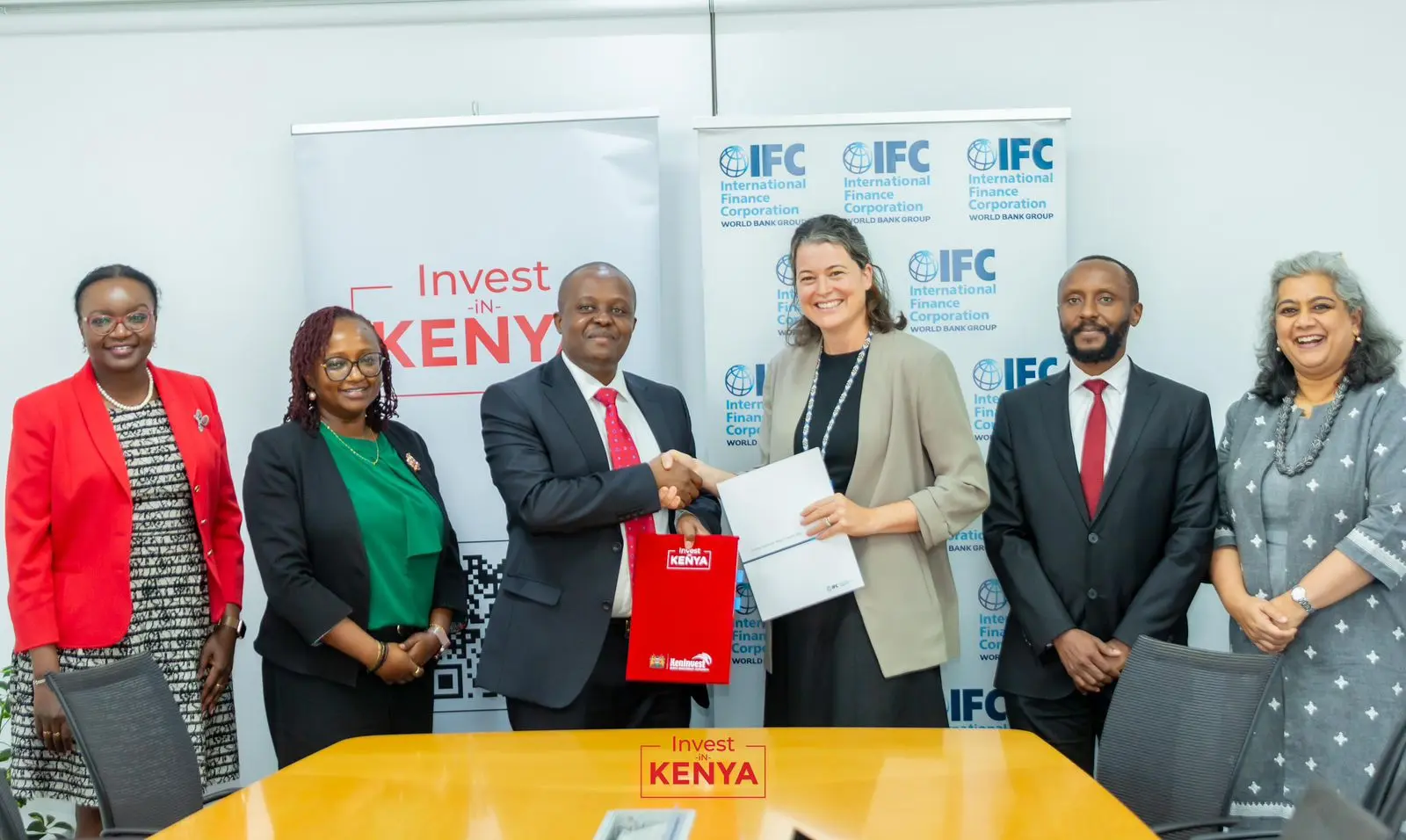Kenya’s domestic debt has swelled dramatically in 2025, rising by over KSh 728 billion in just nine months as the government intensified Treasury bill and bond auctions to bridge mounting budget gaps. Data from the Central Bank of Kenya reveals that gross domestic debt jumped from KSh 5.87 trillion in December 2024 to KSh 6.60 trillion by mid-September 2025, marking one of the most aggressive domestic borrowing cycles in the country’s recent history.
Build the future you deserve. Get started with our top-tier Online courses: ACCA, HESI A2, ATI TEAS 7, HESI EXIT, NCLEX-RN, NCLEX-PN, and Financial Literacy. Let Serrari Ed guide your path to success. Enroll today.
Dramatic Shift in Debt Composition
The surge in domestic borrowing reflects a strategic pivot by President William Ruto’s administration toward local financing sources amid challenging external borrowing conditions. Treasury bonds dominated this borrowing spree, climbing to KSh 5.37 trillion from KSh 4.88 trillion since January 2025, while Treasury bills rose to KSh 1.07 trillion by September 12, up from KSh 846 billion in December 2024.
This shift in debt composition reveals important strategic considerations. Treasury bonds now account for 81.40% of total domestic debt, down slightly from 83.22% in March, as the government increased its reliance on short-term Treasury bills. Treasury bills rose to 16.21% of the portfolio, up from 14.42% in March, reflecting increased appetite for short-term funding to cover immediate financing needs.
Institutional Investor Landscape
The domestic debt burden is carried by a diverse group of institutional and individual investors. Banking institutions remain the largest holders of government securities, though their proportion has slightly declined from 46.17% in June 2023 to 44.84% in September 2025. Pension funds constitute the second-largest holder group, but their share also decreased from 33.42% in June 2023 to 28.67% in September 2025.
Notably, insurance companies have maintained a steady 7% share, while parastatals’ holdings remained stable between 5% and 6%. The most significant change has been the increase in “Other Investors” from 7.13% in June 2023 to 13.46% in September 2025, indicating a diversification of domestic debt holders and potentially reflecting increased retail investor participation through platforms like CBK’s DhowCSD system.
Budget Deficit and Fiscal Management Challenges
The domestic borrowing surge coincides with significant fiscal management challenges. Treasury Cabinet Secretary John Mbadi presented Kenya’s largest budget in history—KSh 4.2 trillion for the 2025/26 financial year—but questions have emerged over a KSh 41 billion discrepancy between the announced deficit of KSh 923.2 billion and the Budget and Appropriations Committee’s approved deficit of KSh 876.1 billion.
According to Mbadi, the projected budget deficit of KSh 923.2 billion including grants is equivalent to 4.8% of GDP, down from the estimated KSh 997.5 billion or 5.7% of GDP in the current financial year. The fiscal deficit will be financed through net external borrowing of KSh 287.7 billion and net domestic borrowing of KSh 635.5 billion.
International Borrowing and External Relations
While domestic borrowing has surged, the government continues seeking external financing. In August 2025, President Ruto secured a KSh 22 billion loan from Japan during the ninth Tokyo International Conference on African Development (TICAD 9). The agreement, signed by Prime Cabinet Secretary Musalia Mudavadi and Nippon Export and Investment Insurance CEO Atsuo Kuroda, will provide up to 25 billion yen in Samurai bonds to support Kenya’s vehicle assembly and energy sectors.
Simultaneously, Treasury CS John Mbadi revealed that Kenya is negotiating with China to extend repayment terms and convert some dollar-denominated loans into yuan to ease repayment pressure. China remains Kenya’s largest bilateral creditor, making these negotiations crucial for debt sustainability.
Debt Sustainability Analysis and International Oversight
Kenya’s debt situation has attracted significant international attention and concern. The recent Debt Sustainability Analysis (DSA) indicates that Kenya’s public debt is sustainable but with a high risk of debt distress. The present value of public debt was 63.0% of GDP against the benchmark debt threshold of 55%.
Critically, the National Treasury has until November 1, 2029 to bring the present value of public debt within the threshold to comply with the law. This timeline adds urgency to current fiscal consolidation efforts.
The World Bank’s latest Kenya Economic Update notes that Kenya’s public debt remains at high risk of distress, with interest payments absorbing about a third of tax revenue. The institution emphasizes that reforms to strengthen fiscal sustainability while promoting inclusive growth are critical to revive a slowing economy and weak labor market.
One decision can change your entire career. Take that step with our Online courses in ACCA, HESI A2, ATI TEAS 7, HESI EXIT, NCLEX-RN, NCLEX-PN, and Financial Literacy. Join Serrari Ed and start building your brighter future today.
Medium-Term Debt Management Strategy
The government has developed a comprehensive approach to address these challenges through its 2025 Medium-Term Debt Management Strategy (MTDS), which guides public debt management over the period 2025-2028. The strategy recognizes that a diversified public debt structure and deepening of the domestic debt market is necessary to mitigate exchange rate risks on Kenya’s external public debt.
The redemption profile shows that 18.6% of domestic debt will mature by June 2025, mainly due to short-term Treasury bills falling due. This bunched repayment schedule over the next nine years, due to the large share of Treasury bills and near-term maturities Treasury bonds, creates significant refinancing pressure.
Treasury Bills and Bonds Market Dynamics
Kenya’s domestic debt instruments have experienced significant rate volatility. Treasury bill rates peaked at around 16% in July 2024 but have since fallen as the Central Bank eased monetary policy. By February 2025, the 91-day yield dropped below 9% for the first time since late 2022, with the 182-day around 9.4% and the last issued 364-day about 10.6%.
The decline is partly due to CBK actively rejecting expensive bids to lower the government’s borrowing costs and a cut in the benchmark interest rate. In a significant policy shift, the National Treasury announced in early 2025 that it will stop issuing new 364-day Treasury bills to reduce short-term debt and manage maturity risk.
Investment Infrastructure and Market Access
The domestic debt market’s growth has been facilitated by improved investment infrastructure. The CBK’s DhowCSD platform allows both individuals and institutions to invest directly in government securities without intermediaries. Treasury bonds require a minimum investment of KSh 50,000, while Treasury bills had minimum investments of KSh 100,000 until recent reforms improved accessibility.
Government bonds are also listed on the Nairobi Securities Exchange for secondary trading, providing liquidity options for investors. The infrastructure supports both competitive and non-competitive bidding, with the Central Bank reserving the right to accept or reject bids partially or fully.
Economic Context and Revenue Challenges
The surge in domestic borrowing occurs against a backdrop of revenue underperformance and economic pressures. Kenya’s real GDP is expected to grow 4.5% in 2025, picking up gradually in the medium term to about 5.0% in 2026-27. However, the economic slowdown has stemmed from multiple challenges including floods, high interest rates, and subdued business sentiment following protests.
Revenue collections have been underperforming expectations, creating pressure to bridge budget gaps through borrowing. The World Bank emphasizes that revenue policy could concentrate on broadening the tax base while improving efficiency and equity, potentially yielding additional revenue of about 4% of GDP.
Fiscal Consolidation Pressures and Reform Imperatives
Kenya faces significant pressure to balance fiscal consolidation with growth and development needs. The World Bank’s Public Finance Review suggests that a comprehensive set of policy reforms could bring Kenya’s debt-to-GDP level to about 44% by 2035, close to mid-2010 figures.
These reforms include rationalizing tax exemptions, encouraging formalization, reforming property taxes, strengthening tax compliance, and improving public expenditure efficiency. The report emphasizes that pathways of continued fiscal slippages or severe austerity measures are economically and socially costly.
IMF Program and International Support
Kenya’s relationship with international financial institutions remains crucial for debt sustainability. The IMF plans an in-depth review of Kenya’s debt to determine financing needs under a new program, with a debt sustainability analysis to be conducted by the time of the board’s consideration.
However, recent tensions have emerged. A World Bank DPO disbursement was withheld as of July 2025 due to concerns about fiscal prudence and governance reforms. This highlights the delicate balance Kenya must maintain between domestic political pressures and international creditor expectations.
Looking Forward: Sustainability Challenges
The dramatic increase in domestic borrowing presents both opportunities and risks for Kenya’s fiscal outlook. On the positive side, domestic borrowing reduces foreign exchange risk and keeps debt service payments within the local economy. However, the rapid growth in domestic debt could crowd out private sector credit and create sustainability challenges if not managed carefully.
Kenya’s total national debt is edging toward the KSh 12 trillion mark, with external debt reaching KSh 5.32 trillion as of May 2025. The combination of high domestic and external debt creates complex management challenges, particularly given the bunched maturity profile that requires significant refinancing over the coming years.
The success of Kenya’s fiscal strategy will depend on the government’s ability to implement comprehensive reforms while maintaining economic growth and political stability. The 2025 domestic borrowing surge reflects immediate financing pressures, but long-term sustainability requires addressing structural fiscal imbalances through revenue mobilization and expenditure rationalization.
As Kenya navigates this challenging fiscal landscape, the balance between domestic and external financing, combined with the pace and effectiveness of structural reforms, will determine whether the country can achieve debt sustainability while maintaining economic growth and social stability. The coming months will be crucial as the government seeks to implement its medium-term debt management strategy while managing immediate financing pressures.
Ready to take your career to the next level? Join our Online courses: ACCA, HESI A2, ATI TEAS 7 , HESI EXIT , NCLEX – RN and NCLEX – PN, Financial Literacy!🌟 Dive into a world of opportunities and empower yourself for success. Explore more at Serrari Ed and start your exciting journey today! ✨
Track GDP, Inflation and Central Bank rates for top African markets with Serrari’s comparator tool.
See today’s Treasury bonds and Money market funds movement across financial service providers in Kenya, using Serrari’s comparator tools.
Photo source: Google
By: Montel Kamau
Serrari Financial Analyst
24th September, 2025
Article, Financial and News Disclaimer
The Value of a Financial Advisor
While this article offers valuable insights, it is essential to recognize that personal finance can be highly complex and unique to each individual. A financial advisor provides professional expertise and personalized guidance to help you make well-informed decisions tailored to your specific circumstances and goals.
Beyond offering knowledge, a financial advisor serves as a trusted partner to help you stay disciplined, avoid common pitfalls, and remain focused on your long-term objectives. Their perspective and experience can complement your own efforts, enhancing your financial well-being and ensuring a more confident approach to managing your finances.
Disclaimer: This article is for informational purposes only and does not constitute financial advice. Readers are encouraged to consult a licensed financial advisor to obtain guidance specific to their financial situation.
Article and News Disclaimer
The information provided on www.serrarigroup.com is for general informational purposes only. While we strive to keep the information up to date and accurate, we make no representations or warranties of any kind, express or implied, about the completeness, accuracy, reliability, suitability, or availability with respect to the website or the information, products, services, or related graphics contained on the website for any purpose. Any reliance you place on such information is therefore strictly at your own risk.
www.serrarigroup.com is not responsible for any errors or omissions, or for the results obtained from the use of this information. All information on the website is provided on an as-is basis, with no guarantee of completeness, accuracy, timeliness, or of the results obtained from the use of this information, and without warranty of any kind, express or implied, including but not limited to warranties of performance, merchantability, and fitness for a particular purpose.
In no event will www.serrarigroup.com be liable to you or anyone else for any decision made or action taken in reliance on the information provided on the website or for any consequential, special, or similar damages, even if advised of the possibility of such damages.
The articles, news, and information presented on www.serrarigroup.com reflect the opinions of the respective authors and contributors and do not necessarily represent the views of the website or its management. Any views or opinions expressed are solely those of the individual authors and do not represent the website's views or opinions as a whole.
The content on www.serrarigroup.com may include links to external websites, which are provided for convenience and informational purposes only. We have no control over the nature, content, and availability of those sites. The inclusion of any links does not necessarily imply a recommendation or endorsement of the views expressed within them.
Every effort is made to keep the website up and running smoothly. However, www.serrarigroup.com takes no responsibility for, and will not be liable for, the website being temporarily unavailable due to technical issues beyond our control.
Please note that laws, regulations, and information can change rapidly, and we advise you to conduct further research and seek professional advice when necessary.
By using www.serrarigroup.com, you agree to this disclaimer and its terms. If you do not agree with this disclaimer, please do not use the website.
www.serrarigroup.com, reserves the right to update, modify, or remove any part of this disclaimer without prior notice. It is your responsibility to review this disclaimer periodically for changes.
Serrari Group 2025












